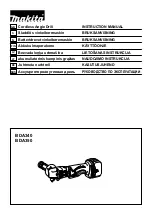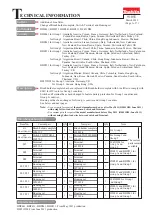
Constant Voltage Ripple and Noise
Periodic and random deviations in the output combine to produce a residual AC voltage superimposed
on the DC output voltage. This residual voltage is specified as the rms or peak-to-peak noise in the
indicated frequency range (see
and
specifications).
Step 1. Turn off the unit under test. Connect the RP79xxA load unit, differential amplifier, and an
oscilloscope (ac coupled) to the output (see
). Make sure that the voltage rating of the
RP79xxA load matches the voltage rating of the unit under test.
Step 2. As shown in the diagram, use the differential probes to connect the differential amplifier to the
+ and - output terminals. The shields of the two probes should be connected together. Connect the
output of the differential amplifier to the oscilloscope with a 50
Ω
termination at the input of the
oscilloscope.
Step 3. For models RP795xA, RP796xA, set the probe to 1:100 and set the inputs of the differential
amplifier to match the probe setting. For models RP794xA, RP795xA, set the probe to 1:10 and set the
inputs of the differential amplifier to match the probe setting. Set the inputs to AC coupling. Set the
input resistance to 1 M
Ω
. Set the oscilloscope’s time base to 5 ms/div, and set the vertical scale to the
maximum sensitivity without clipping the waveform. Turn the bandwidth limit on (usually 20 MHz), and
set the sampling mode to peak detect.
Step 4. Turn on the unit under test and program the instrument settings as described in the in the test
record form under “CV Ripple and Noise”. Turn the output on. Program the RP79xxA load as shown in
the test record card and turn the output on. Let the oscilloscope run for a few seconds to generate
enough measurement points. On the Keysight Infiniium scope, the maximum peak-to-peak voltage
measurement is indicated at the bottom of the screen on the right side. The result should not exceed
the peak-to-peak limits in the test record form under “CV Ripple and Noise, peak-to-peak”.
If the measurement contains any question marks, clear the measurement and try
again. This means that some of the scope data received was questionable.
Step 5. Disconnect the oscilloscope and connect an rms voltmeter in its place. Do not disconnect the
50 ohm termination. Divide the reading of the rms voltmeter according to the differential amplifier
setting. The result should not exceed the rms limits in the test record form for the appropriate model
under “CV Ripple and Noise, rms”.
Transient Recovery Time
This test measures the time for the output voltage to recover to within the specified value following a
50% change in the instrument's rated load current.
Step 1. Turn off the unit under test. Connect an oscilloscope with the specified probe across the sense
terminals (see
). Connect the RP79xxA load unit to the output terminals. Make sure that
the voltage rating of the RP79xxA load matches the voltage rating of the unit under test.
Step 2. Turn on the unit under test and program the instrument settings as described in the test record
form under “Transient Response”.
6 Verification and Calibration
270
Keysight RP7900 Series Operating and Service Guide
Summary of Contents for RP7900 Series
Page 1: ...Keysight Regenerative Power System RP7900 Series Operating and Service Guide ...
Page 2: ......
Page 100: ......
Page 262: ......
Page 314: ......
















































